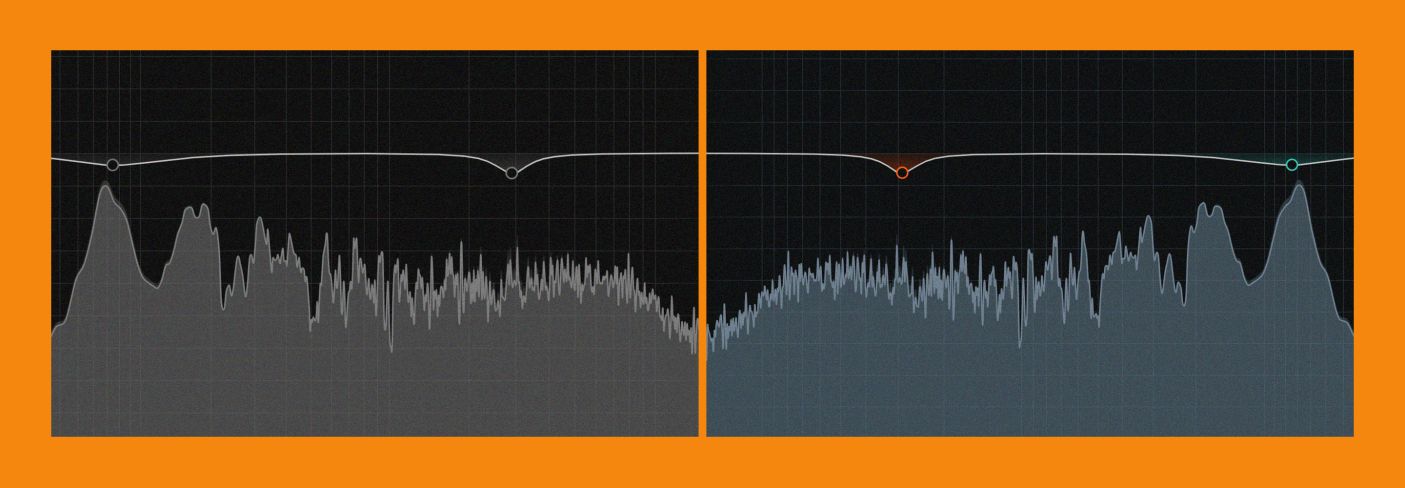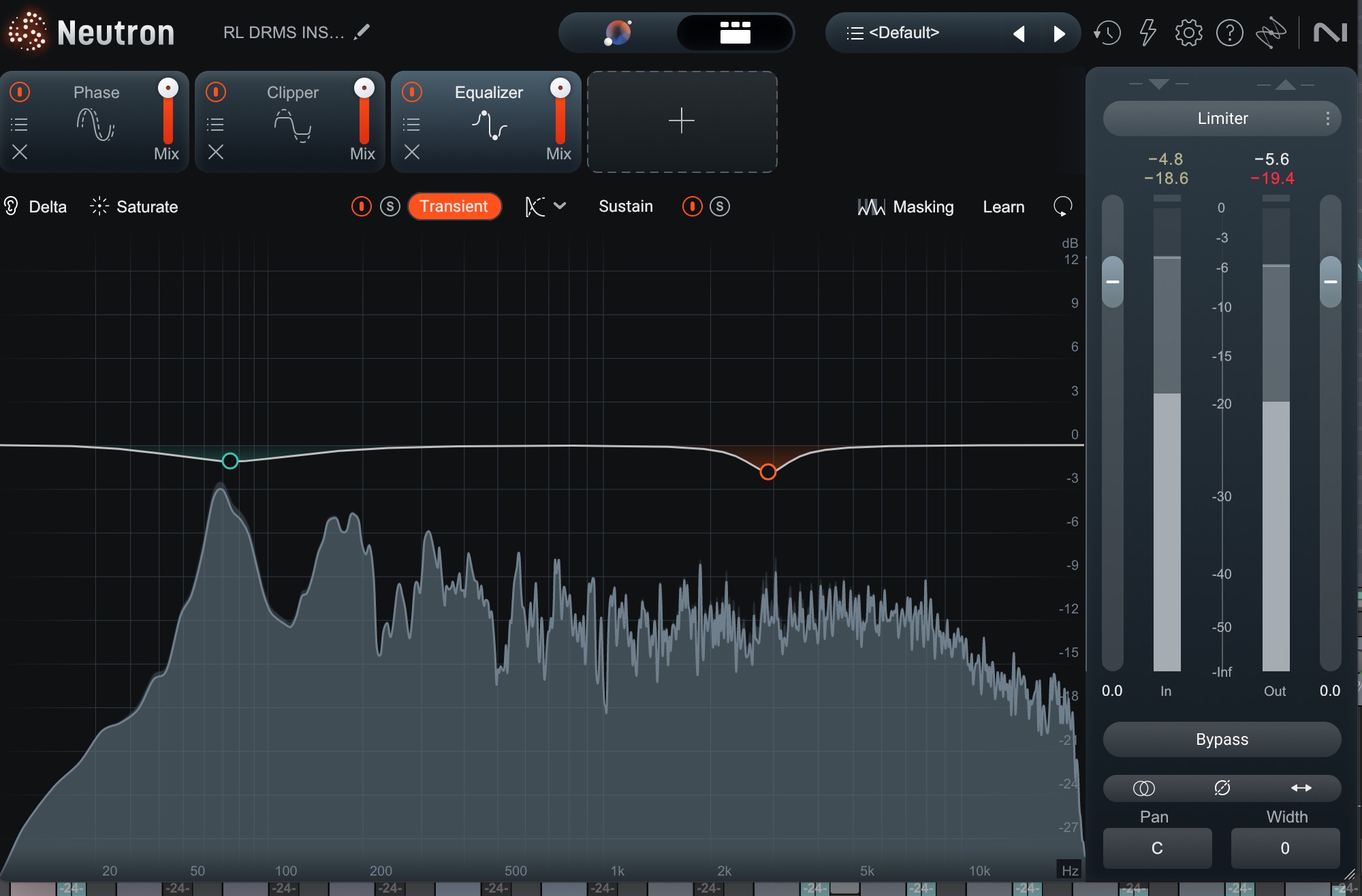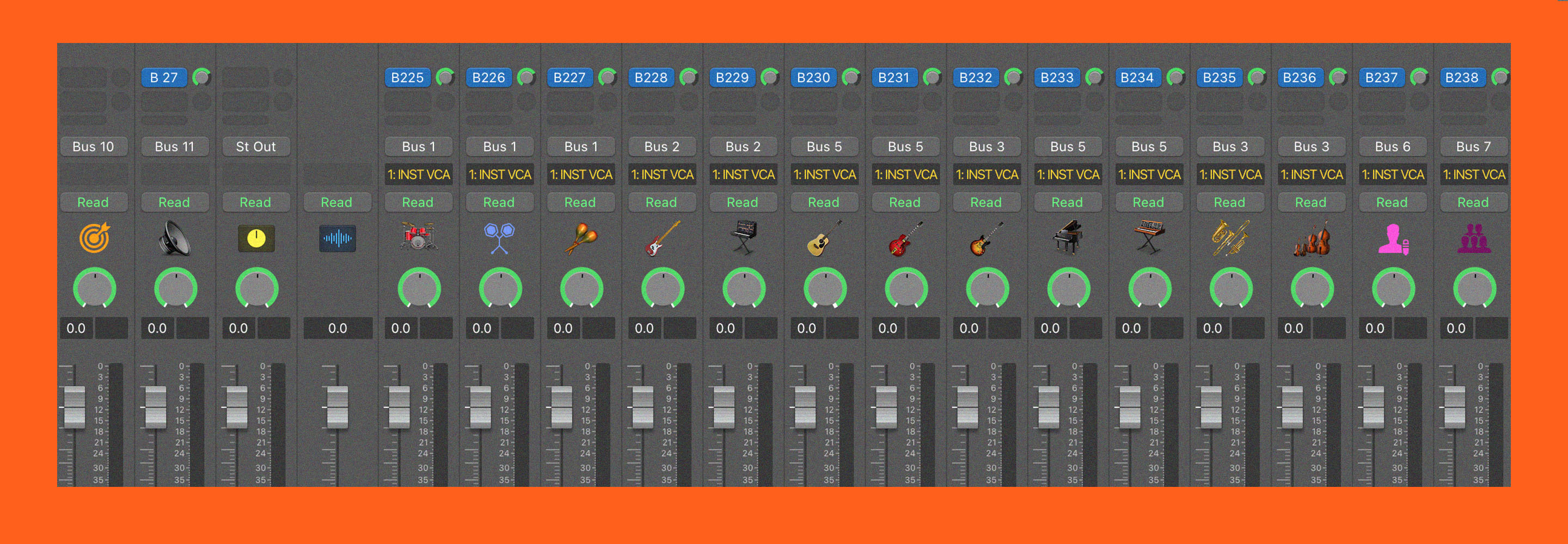
10 ways to take your mix from amateur to professional
Discover pro mixing techniques and expert tips to transform your amateur tracks into polished, professional-sounding mixes.
You can instantly recognize a professional-sounding mix, yet getting your own tracks to that level feels incredibly challenging. What exactly makes a mix sound "pro" instead of "amateur"? This article cuts through the noise, revealing the key differences between an amateur mix and a radio-ready product.
Try the techniques in this tutorial using iZotope


Music Production Suite 7
What separates an amateur mix from a professional one?
An amateur mix often sounds unbalanced and lacks clarity. Instruments and vocals may compete for space, making it difficult to distinguish individual elements. Low end bloat is common. So is high-end harshness. Effects like reverb or delay might be overused, creating a washed-out or cluttered sound. The overall impression is often like someone put a blanket on the song.
Amateur mixes often reveal a lack of attention to detail. Small but critical elements, like vocal sibilance, resonant frequencies, or inconsistent performances, go unaddressed. Translation is usually a problem as well: the mix might sound decent on one playback system but fall apart on others, indicating poor monitoring and room acoustics.
What about a professional mix?
You know a professional mix when you hear one: it sounds like a record.
But what does that actually mean? And how do you get there?
Detail is a huge part of it, as veteran engineer Eric Mitchell can attest to:
“Probably the biggest thing I'm doing every day is hyper-management of frequencies,” he told me. “You can't really have any buildup or overlap or else that's going to get in your way and have it be clean and loud.”
Details extend beyond how mixes sound – indeed, how the mix is organized within the session itself often demonstrates who’s a pro and who is not.
A well-mixed track looks organized when viewed in a digital audio workstation, with clear labeling, color-coding, and logical grouping of tracks. Instruments are usually routed to buses – such as drums, vocals, or guitars – allowing for streamlined processing and balance adjustments.
The mixer view is tidy, and screensets/layouts are usually employed to get around large sessions with ease.
This visual organization mirrors the mix’s clarity, making it easier to navigate, edit, and recall settings – essential for both efficiency and collaboration in professional workflows.
Now, let’s cover some concrete things that make a mix feel more professional.
1 . Get your room and monitors right
Let’s be honest: no plugin or processor can fix a mix crafted in an unreliable listening environment. Pros know their room and monitoring situations are the foundation of every decision: pan a guitar too wide, and it might vanish on laptop speakers; crank the bass, and it could turn to mud on club systems.
Amateur mixes often betray their origins in untreated spaces, where uneven frequency response or standing waves trick you into overcompensating. This can cause all sorts of problems in monitoring – especially in the bass.
That said, room treatment isn’t just about slapping foam on walls – in fact, foam itself is usually the worst tool for the job of room treatment.
Start with speaker selection and speaker placement: make sure your monitors aren’t too small or too big for your room. If they are not right for the room, sell them and get new ones. Consult a company like GIK, which offers free room consultations, about how to get the most bang out of your buck.

Monitor placement in a home studio setting
In a room that will always have problems, you can default to excellent headphones – and you can make use of tools like iZotope


Insight 2


Tonal Balance Control 2
Metering bridges the gap while you’re dialing in your space; for example, if your mixes consistently skew harsh on reference tracks, your room might be absorbing too much high end.
Still, there’s no shortcut for time and effort. Acoustic treatment refines your space. Even so, your ears need time to grow accustomed to the space. After a while, you’ll click into your space once you have it treated – just don’t expect it to happen right away.
2. Practice your craft
You wouldn’t expect to play guitar like Hendrix without hours in the woodshed, so why assume mixing is any different? The difference between amateur and professional mixes often boils down to one thing – deliberate practice. Not just tweaking knobs aimlessly, but actively analyzing, comparing, and refining with a clear goal in mind.
As Matthew Weiss likes to say on his Youtube channel: “We are musicians, and sound is our instrument.”
That means you have to practice. You can read all about practicing in our mixing challenge guide.
There are a variety of multitracks available online for you to use. Cambridge-MT will have you covered for a while. You’ll get everything from pro stems to amateur recordings – and you can practice endlessly on them.
And while you practice, you can peruse the audio mixing tutorials on iZotope that can help you along the way.
3. Take jobs with deadlines
There’s a certain kind of pressure that only comes when someone is waiting for your work. When a mix isn’t just practice, but a deliverable project with real stakes – such as feeding your family – the work takes on a whole new feel.
That pressure is one of the fastest teachers you’ll ever have. Mission-critical work forces you to make decisions quickly, trust your instincts, and live with the results. Unlike personal projects, where you can tweak endlessly, a deadline makes you prioritize time at the cost of accelerated decision making.
You start to recognize the difference between "perfect" and "finished," and that’s when your work begins to sound professional.
Also, once you send a mix off for review, something strange happens – you hear it differently. Maybe it’s the psychological distance, or maybe it’s the anticipation of feedback, but flaws and strengths alike become glaringly obvious. This is why working with clients is irreplaceable: they listen without the baggage of your process. They don’t care how you got there; they only care if it sounds good. And when they come back with notes – "the vocals need more presence," "the bass isn’t hitting right" – you learn what actually translates, not just what you think works in your studio.
At its core, this is a service job. Musicians bring us audio engineers the ingredients, tell us what they want it to resemble, and trust us to cook the meal. And like every good restaurant experience, it all happens in a reasonable time frame.
Deadlines force you to collaborate, to communicate, and to adapt. You learn when to defend a creative choice and when to let go. You figure out how to work efficiently, because time is money, and clients won’t pay for your indecision.
Every mix you finish under these conditions pushes you further from amateur habits and closer to the real thing – because professionalism isn’t just about sound. It’s about reliability, clarity, and knowing the job will get done, no matter what.
4. Understand the function of transients
A transient is the initial, high-energy burst of a sound – the sharp crack of a snare, the pluck of a guitar string, the attack of a piano key. But really, it’s more than that: it’s the split-second moment that defines how a sound is perceived.
Without careful attention to transients, there is no impact, and there is no definition. Want a wider, deeper mix? Believe it or not, transients are a huge part of this. What makes transients truly fascinating is their role in shaping a mix’s spatial image. The precision of a transient dictates how a sound occupies the stereo field – whether it feels up front or pushed back, wide or focused. A blurred transient smears the sense of depth; a well-defined one locks instruments into place.
But there’s a catch: transients are also the biggest consumers of headroom. A mix with uncontrolled transients might sound dynamic on its own, but it’ll struggle to compete in volume and clarity against professionally mastered tracks.
Think of a drum kit: the snare’s transient tells you exactly where it sits in the soundstage, while the sustain and room tone place it in an environment. If transients are muddy, the entire mix can feel flat or congested, no matter how much reverb or panning you throw at it.
Managing transients is where tools like the Clipper module in


Neutron
Meanwhile, the Transient/Sustain modes in Neutron and Ozone allow for nuanced control to various elements in a mix, emphasizing the attack of a sound to bring it forward, or reducing it to push elements back.

Transient/Sustain mode in Neutron
Used subtly, these tools help maintain clarity and separation, ensuring every element has its place. Because in the end, a professional mix isn’t just about loudness or balance – it’s about the way every transient defines the space around it.
5. Create contrast in the mix
Think of contrast in mixing like turning on a flashlight in a dark room. The light only matters because of the darkness around it. That’s how effects work in your mix: they need something plain to stand against to really make an impact.
Reverb is a prime example. if every sound in your mix has reverb, nothing will actually sound deep or distant. It’s the balance between dry, up-close sounds and wet, far-away ones that creates the illusion of space.
This idea applies to everything. Want your chorus to hit harder? Then hold back in the verse first. Need certain instruments to shine? Let others stay simpler in comparison.
Even brightness works this way – if every element is sparkling and crisp, nothing stands out.
Of course, modern mixing often fights against this. Most commercial tracks are loud and upfront, with fewer dynamic swings than before.
So contrast has to be more clever these days.
Grammy-winning engineer Julian King told me a great way of viewing the problem.
“Unfortunately,” he said, “the haste and the loudness of where we live today means we stomp on everything all the time. It would be nice to work on something that had a lot of dynamic range in it, but compared to the records I made twenty or thirty years ago, there’s so little dynamic range, so you start trying to find ways to create the illusion of dynamic range. Frequency shifts in the mix – where low frequency and high frequency elements come in to take over the choruses – make it feel like it’s getting louder when it’s really just changing its frequency complexion, because it’s already as loud as it’s gonna get.”
6. Less is more
Every time you reach for an effect, you’re making a sonic compromise. That’s the nature of the game.
Shimmering highs have the potential to introduce harshness. Gluey compression can make a mix dull and lifeless. The more processing you pile on, the easier it is to lose what made the track special in the first place. Over-processing doesn’t sound polished – it sounds like over-processing.
Over-processing also makes your work feel less creative. Consider what veteran mixer Ike Shultz told me:
“When I approach a song,” he said, “I'm trying to get the things between the song and your ears to be as little as possible.”
This means preserving workflow at all costs.
“Every single mouse click and every single menu is taking you farther and farther away from the point of mixing – which is the song. And so it is required to take out as many of those steps as possible.”
The best mixes often have restraint at their core. That vocal might not need five plugins – just the right one. That snare might not need radical reshaping – just a slight nudge in the right direction. When you start listening for what the track actually needs instead of what you think it needs, your mixes will sound more natural, more professional, and most importantly, more like music.
7. Understand movement and automation
A great mix isn’t static – it breathes, shifts, and pulls the listener along. The difference between a flat, lifeless track and one that feels alive often comes down to movement. Subtle changes in level, panning, or tone keep the ear engaged without drawing attention to the technique itself.
As engineer Marc Daniel Nelson told me, all his favorite mixes have this sense of movement.
“Listening back to the great mixes I grew up on in the 80s and 90s,” he said, “it wasn't flat and static. There was always stuff coming up. Michael Brauer is really good at that. CLA is really at that, Bill Schnee is extremely good at it. Clearmountain is really good at that. Where like if there's nothing in that pocket, Find the melody in anything and pull it up.”
Automation is the most direct way to create this effect. A vocal that lifts slightly in the chorus, a guitar part that drifts wider for the choruses, or a synth pad that subtly brightens as the arrangement builds – these small moves add dimension and intention.
But movement isn’t just about fader rides. Processors like Ozone’s mid/side saturation or Vintage Compressor – again, in mid/side – can introduce gentle, program-dependent shifts that make elements feel more dynamic. The key is subtlety: a 0.5 dB change in gain reduction on the mid channel – or a 2% shift in width – can be all it takes to turn a good mix into one that feels alive.
8. Listen to music – even during your mix
It’s easy to get lost in technical details – EQ curves, compression ratios, plugin chains – but never forget that mixing exists to serve the music. One of the simplest ways to keep perspective is to listen to music.
New releases, classic records, even tracks outside your usual genre can spark ideas and remind you what’s possible. When you hear a mix that grabs you, dissect it: How is the vocal sitting? What’s making the drums hit so hard? That curiosity keeps your own work fresh and competitive.
Don’t just listen passively, though. Load references directly into your session – whether through Ozone’s reference tool, ADPTR AUDIO Metric AB, or simply lining them up in your DAW. A/B your mix against the rough version frequently to ensure you’re preserving the original intent, and when doing revisions, compare against the previous mix to track your progress.
You can use active listening to keep your ears sharp during the mix. Take it from Adam Hawkins, the engineer behind Twenty One Pilots.
“I'm constantly finding a reference.” He told me. “I'm like, I gotta make it sound like that – and then when it's close to that? I'm done.”
And if you hear something brilliant in another engineer’s work? Reach out. Most mixers love talking shop, and you might learn the one trick that unlocks your next breakthrough.
9. Let time take time
Mixing is a craft that unfolds at its own pace. No matter how many tutorials you watch or gear you acquire, real growth happens in the accumulated hours of trial, error, and occasional breakthroughs. Some days you’ll stumble into a mix that sounds inexplicably professional – like you’ve finally cracked the code. Other days, you’ll wrestle with a session that refuses to click, no matter how many plugins you throw at it. Both experiences are equally valuable.
The frustrating truth? There are no permanent shortcuts. What feels like a limitation today – your room, your monitors, your technical knowledge – will gradually become second nature as you keep working. The mixes that once took you days will eventually take hours. The moves that felt calculated will start to feel instinctive. But this only happens if you allow yourself the grace of gradual progress.
10. Don’t give up
Trust the process, even when it’s humbling. Revisit old mixes to hear how far you’ve come.
Embrace the accidents – that impulsive EQ boost or unplanned delay throw that somehow works. Because over time, your mistakes will teach you a lot. They’ll also lead to your successes.
The only non-negotiable is keeping at it. One day, you’ll realize your mixes no longer sound like you’re trying to make them professional. They’ll just sound pro.
The good thing is, the tools the pros and amateurs use are available for everyone – and many of them come courtesy of your old pals over at Native Instruments, iZotope, and Plug-in Alliance.



